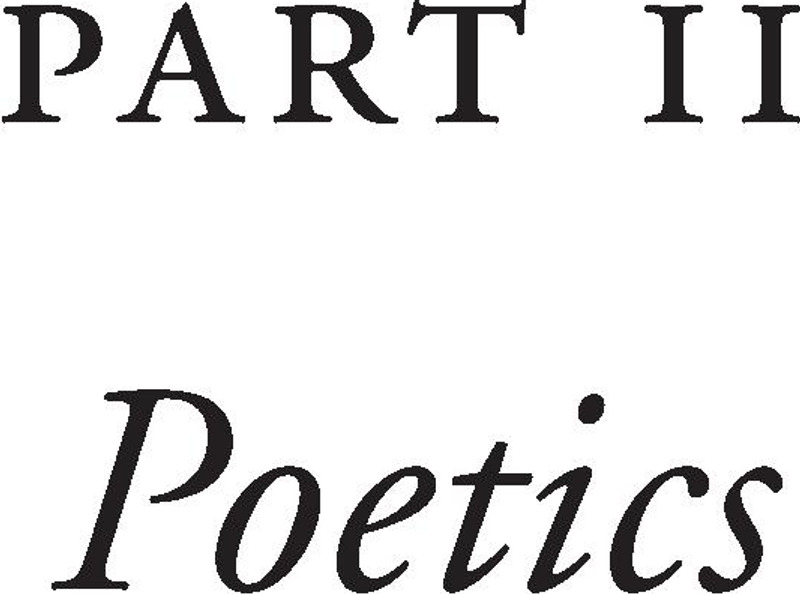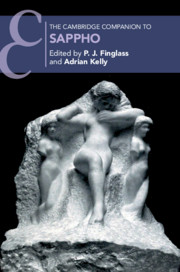Book contents
- The Cambridge Companion to Sappho
- Cambridge Companions to Literature
- The Cambridge Companion to Sappho
- Copyright page
- Contents
- Plates
- Contributors
- Abbreviations
- Introduction
- Part I Contexts
- Part II Poetics
- Part III Transmission
- Part IV Receptions
- Bibliography
- General Index
- Index to the Reception of Sappho
- Plate Section
- References
Part II - Poetics
Published online by Cambridge University Press: 09 April 2021
- The Cambridge Companion to Sappho
- Cambridge Companions to Literature
- The Cambridge Companion to Sappho
- Copyright page
- Contents
- Plates
- Contributors
- Abbreviations
- Introduction
- Part I Contexts
- Part II Poetics
- Part III Transmission
- Part IV Receptions
- Bibliography
- General Index
- Index to the Reception of Sappho
- Plate Section
- References
Summary

- Type
- Chapter
- Information
- The Cambridge Companion to Sappho , pp. 91 - 216Publisher: Cambridge University PressPrint publication year: 2021
References
Further Reading
For genre(s) in Sappho in general, see Page 1955: 119–30, Parker 1993 ≈ Greene 1996b: 146–83, Stehle 1997: 262–88, Yatromanolakis 2004, D’Alessio 2018. In addition to these, for wedding songs, see McEvilley 2008: 186–214. For the Brothers Poem and genre, see Martin 2016, M. Mueller 2016, Peponi 2016.
Further Reading
The main scholarly trends relating to the context(s) of Sappho’s songs are mentioned at the start of this chapter; see in addition F. Ferrari 2003, Tedeschi 2015: 11–14, Neri in Neri and Cinti 2017: xliii–l, and Loscalzo 2019, who states, in line with the sympotic perspective adopted by H. Parker and others, that Sappho and her followers were hetairai, polite and cultured women used to meeting male guests and exchanging various feelings and topics with them on equal terms. For the likely audience of Sappho’s iambic poetry, see Rosenmeyer 2006.
Further Reading
For the metres of Sappho, see Page 1955: 318–23 (somewhat dated), Snell 1982: 43–8 (the best and most influential approach on Aeolic metres), West 1982: 29–34 (an excellent short survey), Sicking 1993: 135–8 (somewhat idiosyncratic), M. Martinelli 1997: 238–41 (main strophic types only). For a complete list of metres used by Sappho, with minimal discussion, see Voigt 1971: 15–20. West 1992 and Hagel 2010 offer excellent surveys of ancient Greek music.
Further Reading
The standard reference grammar of the language of Sappho (and Alcaeus) is still the excellent Hamm 1958, though it is not very informative on ancient sources on Aeolic and obviously requires updating in the light of new papyrological discoveries. Other works, more limited in scope, are Gallavotti 1948 and Hooker 1977. A. Bowie 1981 analyses language in view of his theory of a native Lesbian tradition, while Tribulato 2016 provides an overview of the language of East Aeolic poetry in the context of monodic lyric. The publication of the ‘New’ and ‘Newest’ Sappho has not added much to the overall picture of the dialect; a work specifically dealing with linguistic features of the ‘New’ Sappho is Bettarini 2005.
The East Aeolic (i.e. Lesbian) epichoric dialect is described in standard works such as Bechtel 1921: 1–130, Buck 1955, and Colvin 2007; see also now Finkelberg 2018 and Hodot 2018. Blümel 1982, a study of the Aeolic group within a generative framework, is a difficult work, which should only be approached by experts. The most up-to-date study of the dialect as transmitted by inscriptions is the excellent Hodot 1990.
There is no comprehensive and up-to-date overview of the passages in which ancient grammatical and dialectological sources discuss Sappho’s language. This can still be studied only by scanning the whole apparatus and index auctorum of Voigt 1971. Individual studies dealing with some aspects of the grammarians’ handling of ancient lyric (and thus also of Sappho) are García Teijeiro 1993, Cassio 1993, 2007.
Further Reading
Silk 2010 is a helpful introduction to the language of lyric poetry in general. Two excellent commentaries are most perceptive on Sappho’s poetic language: Hutchinson 2001: 139–86 and Budelmann 2018: 113–52; Tzamali 1996 is useful on points of detail. Several of the chapters in section I (‘Language and literary context’) of Greene 1996a have a lot to say about Sappho’s poetic language. Zellner 2010 has an axe to grind but brings out the playfulness of Sappho’s rhetorical style.
Further Reading
The complexities of the first-person speaker in Greek lyric poetry are well described by Slings 1990a and further discussed in a collection of essays edited by Bakker 2017. Calame 1996 ≈ 2001: 210–14, 231–3, 249–52 ≈ 1977: i 367–72, 400–4, 427–32, Lardinois 1996, and F. Ferrari 2010 argue for the public performance of Sappho’s songs. For Sappho’s love songs, Winkler 1981 = H. Foley 1981: 63–89 ≈ Winkler 1990: 162–87 ≈ Greene 1996a: 89–109, Snyder 1997, and Boehringer and Calame 2016 may be consulted. For the songs about her brothers, see F. Ferrari 2014, Lardinois 2016, and Peponi 2016. Lidov 2016 discusses both types of song.
Further Reading
Culler 2015 is an excellent resource for an overview of modern lyric, as is Jackson and Prins 2014, while Prins 1999 addresses Sappho’s place within the genre. For recent ‘literary’ approaches to Sappho, see Budelmann and Phillips 2018, and for helpful discussion on the idea of the lyric in Pindar, Payne 2007, 2018. For apostrophe in Sappho, see Greene 1994 = 1996a: 233–47, and for deixis, Felson 2004, Peponi 2004 (in Alcman), and D’Alessio 2018. For readings of Sappho which engage with body, time, and language, see Burnett 1983: 209–313, duBois 1995, Carson 1986, 1996, 1997, Winkler 1990: 162–87, Greene and Skinner 2009.
Further Reading
A discussion of myth in Greek lyric that would show Sappho’s commonalities and differences would be useful, but Nagy 2007 is idiosyncratic and already outdated. Meyerhoff 1984 compares Sappho and Alcaeus, and although the newer fragments are of course absent and some interpretations are forced, the book offers many good observations. There are excellent studies of the myths in particular poems and fragments: on fr. 16, Pfeijffer 2000a is especially helpful; on the Tithonus Poem, see Greene and Skinner 2009; on fr. 44, Spelman 2017a offers an interesting interpretation and gives a good view of the discussion.
Further Reading
The hymnic elements in Sappho’s prayer to Aphrodite in fr. 1 have been much discussed. For the conventions of Greek hymns, see Pulleyn 1997, Furley and Bremer 2001. For fr. 1’s relationship to cultic hymns, see Cameron 1939, Stanley 1976, B. Thomas 1999. For Sappho’s relationship with Aphrodite more generally, see Martyn 1990, Schlesier 2016. The recent papyrus finds have led to increased interest in the role of Hera in Sappho’s poetry: Boedeker 2016, Kurke 2016: 242–9.

